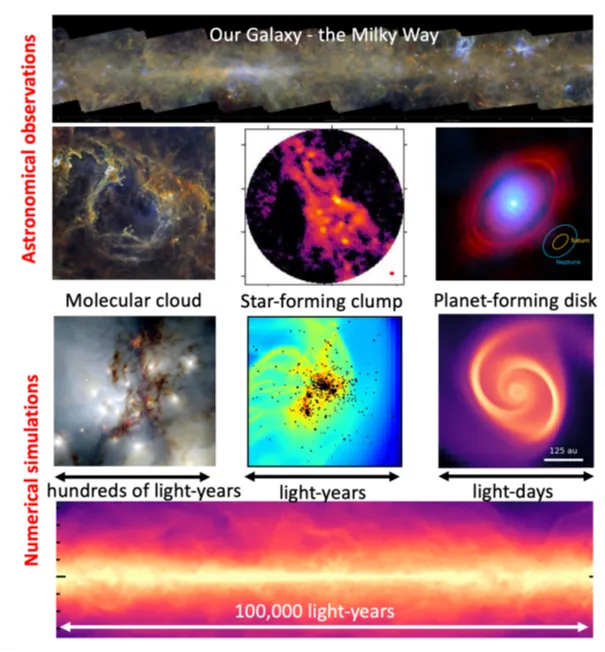
Unlocking the Secrets of Star and Planet Formation: A Revolutionary Approach
2025-08-22
Author: Noah
A Cosmic Journey: From Simplicity to Complexity
The universe, born from a nearly uniform state over 13 billion years ago, has transformed into a magnificent tapestry of galaxies, stars, and planets. At the heart of this expansive cosmic story is our quest to unravel the origins and evolution of these celestial bodies—one of the greatest challenges in modern astrophysics.
Shifting Paradigms: The Dynamic Nature of the Universe
Not long ago, scientists viewed galaxies, like our Milky Way, as static entities slowly evolving over vast stretches of time. However, groundbreaking research reveals that the interstellar medium (ISM)—the vast expanse between stars—is anything but steady. It is a dynamic, chaotic environment, influenced by numerous, intricate feedback systems.
The ISM: The Heart of Star and Planet Formation
At the core of star and planet formation is the ISM, a turbulent realm where gas collapses under its own gravity, igniting the stellar birth process. This cycle is governed by a delicate balance between gravitational forces and opposing elements, including turbulence, radiation pressure, and magnetic fields, shaping the birth of these remarkable entities.
A Cosmic Interconnectedness: Star Formation and Galactic Dynamics
Star formation doesn’t happen in isolation. It is intricately linked to large-scale galactic dynamics—like density waves and interactions with neighboring galaxies. Newly formed stars influence their surroundings through powerful feedback mechanisms, impacting the ISM's chemical and thermal states and playing a crucial role in the future of subsequent star formation.
The Essential Role of Advanced Observational Tools
To deepen our understanding of the ISM, direct observations remain paramount. Utilizing advanced facilities such as the Atacama Large Millimeter/submillimeter Array (ALMA) and the James Webb Space Telescope enables astronomers to capture a spectrum of wavelengths, unveiling the complex interplay of star formation across various scales—from the grand galactic disk to the minutiae of planet-forming disks.
Pioneering Simulations: Bridging the Gaps
Advances in high-performance computing are revolutionizing our ability to model these complex systems. State-of-the-art numerical simulations allow scientists to encompass a broad spectrum of physics—gravity, turbulence, and chemical evolution—acknowledging the vast differences in spatial scales that govern star formation processes.
The Future of Galactic Studies: Multi-Scale Challenges Ahead
The road ahead is challenging yet exciting. As we refine our simulations—from global galactic models down to intricate details of star-forming regions—we’ll unlock new insights into our universe. Each layer we peel back reveals just how interconnected and dynamic the galaxy truly is, reshaping our understanding of the cosmos.









 Brasil (PT)
Brasil (PT)
 Canada (EN)
Canada (EN)
 Chile (ES)
Chile (ES)
 Česko (CS)
Česko (CS)
 대한민국 (KO)
대한민국 (KO)
 España (ES)
España (ES)
 France (FR)
France (FR)
 Hong Kong (EN)
Hong Kong (EN)
 Italia (IT)
Italia (IT)
 日本 (JA)
日本 (JA)
 Magyarország (HU)
Magyarország (HU)
 Norge (NO)
Norge (NO)
 Polska (PL)
Polska (PL)
 Schweiz (DE)
Schweiz (DE)
 Singapore (EN)
Singapore (EN)
 Sverige (SV)
Sverige (SV)
 Suomi (FI)
Suomi (FI)
 Türkiye (TR)
Türkiye (TR)
 الإمارات العربية المتحدة (AR)
الإمارات العربية المتحدة (AR)